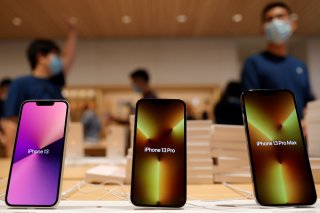Despite Inflation, Interest in Smartphones Surges for Holidays
While consumer spending on electronics has dipped, interest in smartphones defies inflationary trends.
More than a third of U.S. consumers expect to purchase a consumer electronics product this holiday season, although that’s true of fewer people than this time last year. That’s according to the Holiday Purchase Intentions Report issued this week by research firm NPD Group.
“After two years of strong growth supported by at-home pandemic-era needs, consumers expect to spend fewer dollars this holiday season on CE,” Paul Gagnon, vice president and industry advisor for NPD, said in the release. “Categories like smartphones and smartwatches are benefitting from consumers planning to spend more time away from home.”
Smartphones are, nonetheless, expected to once again be a popular category this holiday season, with 27 percent more consumers interested in such a purchase compared to the holiday season two years ago.
In addition to smartphones, headphones, tablets, e-readers, and smartwatches are also expected to be popular, according to the firm.
“Excitement around newly released devices and a longer stretch of holiday promotions will help determine what consumers purchase this holiday season,” Ben Arnold, executive director and technology industry analyst for NPD, said in the report. “In addition to these high interest categories, TVs and smart home products remain CE staples during the holiday timeframe. We can expect promotions to drive unit sales in these categories for the fourth quarter.”
In fact, the Bureau of Labor Statistics (BLS) found last month that amid rising inflation, two product categories that are exempt from this trend are smartphones and televisions. Prices for smartphones dropped 21 percent year-over-year, and television prices dropped by 17.9 percent, even as other categories saw double-digit increases.
Why is this? As explained by CNBC, it isn't so much that the devices themselves are getting less expensive, but rather because of how BLS keeps track of the data.
“Normally, the CPI contains price comparisons for identical items, whose prices don’t change much from year to year. So, it might compare eggs with eggs, for example. But in the case of smartphones, the statistics bureau has to control for devices that get better each year. If smartphones are improving and the price is staying the same, then the bureau records a price decline,” the CNBC analysis said.
“If a replacement smartphone is different from its predecessor and the value of the difference in quality can be accurately estimated, a quality adjustment can be made to the previous item’s price to include the estimated value of the difference in quality,” BLS explained. “For example, CPI analysts have estimated the value of smartphone features such as screen resolution. So if a manufacturer provides a higher resolution screen to the latest model in their smartphone line, the CPI adds the value of additional resolution to the price of the predecessor item. Similarly, should the screen decrease in resolution, the value of the higher resolution would be subtracted from the predecessor’s price.”
Stephen Silver, a technology writer for The National Interest, is a journalist, essayist and film critic, who is also a contributor to The Philadelphia Inquirer, Philly Voice, Philadelphia Weekly, the Jewish Telegraphic Agency, Living Life Fearless, Backstage magazine, Broad Street Review and Splice Today. The co-founder of the Philadelphia Film Critics Circle, Stephen lives in suburban Philadelphia with his wife and two sons. Follow him on Twitter at @StephenSilver.
Image: Reuters.

